
La Paz Valley: The Heartbeat of Bolivia's Highlands
Explore the breathtaking La Paz Valley in Bolivia, where high-altitude adventures meet rich cultural experiences amidst stunning Andean landscapes.
Nestled high in the Andes, La Paz Valley offers a unique blend of natural beauty and cultural richness that captivates every traveler. The valley is surrounded by towering mountains, providing a dramatic backdrop to the bustling city of La Paz, which is the highest administrative capital in the world. The air is thin, but the experience is thick with adventure and wonder. La Paz Valley is a treasure trove of history and tradition. Wander through the winding streets to discover markets brimming with colorful textiles, handcrafted goods, and delicious local cuisine. The Witches' Market is a must-see, where you can find everything from herbal remedies to traditional Andean artifacts. For nature enthusiasts, the valley offers numerous trails and outdoor activities. The famous Moon Valley, with its otherworldly landscapes, is just a short drive away. And don't miss the chance to take a cable car ride on the Mi Teleférico, which provides stunning panoramic views of the city and surrounding mountains. Whether you're an adventurer looking to explore or a culture buff eager to learn, La Paz Valley promises an unforgettable experience, rich with the flavors and sounds of Bolivia.
Local tips in La Paz Valley
- Acclimate to the altitude: Spend the first day taking it easy to adjust to the high altitude.
- Visit early or late: To avoid crowds at popular spots like the Witches' Market and Moon Valley, go early in the morning or later in the afternoon.
- Use the cable cars: Mi Teleférico is not only a transport system but also offers some of the best views of the city.
- Stay hydrated: The high altitude can be dehydrating, so drink plenty of water.
- Try local cuisine: Don't miss out on sampling local dishes like salteñas and anticuchos from street vendors.
La Paz Valley: The Heartbeat of Bolivia's Highlands
Nestled high in the Andes, La Paz Valley offers a unique blend of natural beauty and cultural richness that captivates every traveler. The valley is surrounded by towering mountains, providing a dramatic backdrop to the bustling city of La Paz, which is the highest administrative capital in the world. The air is thin, but the experience is thick with adventure and wonder. La Paz Valley is a treasure trove of history and tradition. Wander through the winding streets to discover markets brimming with colorful textiles, handcrafted goods, and delicious local cuisine. The Witches' Market is a must-see, where you can find everything from herbal remedies to traditional Andean artifacts. For nature enthusiasts, the valley offers numerous trails and outdoor activities. The famous Moon Valley, with its otherworldly landscapes, is just a short drive away. And don't miss the chance to take a cable car ride on the Mi Teleférico, which provides stunning panoramic views of the city and surrounding mountains. Whether you're an adventurer looking to explore or a culture buff eager to learn, La Paz Valley promises an unforgettable experience, rich with the flavors and sounds of Bolivia.
When is the best time to go to La Paz Valley?
Iconic landmarks you can’t miss
Plaza Mayor de San Francisco
Experience the vibrant culture and history of La Paz at Plaza Mayor de San Francisco, a must-visit historical landmark and tourist attraction.

Plaza Murillo
Experience the vibrant culture and rich history at Plaza Murillo, the iconic heart of La Paz, where Bolivia comes alive.

The Witches Market
Discover the enchanting Witches Market in La Paz, where vibrant culture, mysticism, and unique handicrafts await every traveler.

Plaza España
Discover the vibrant charm of Plaza España in La Paz, a cultural oasis perfect for relaxation, exploration, and enjoying local Bolivian life.

Valle de la Luna
Explore the surreal landscapes of Valle de la Luna, a breathtaking natural park near La Paz, Bolivia, where nature’s artistry takes center stage.

Mirador Killi Killi
Discover the panoramic beauty of La Paz from Mirador Killi Killi, a must-visit viewpoint that showcases breathtaking landscapes and vibrant city life.

Copacabana La Paz
Explore the enchanting town of Copacabana on Lake Titicaca, rich in culture, history, and breathtaking landscapes.

Monument to German Busch
Explore the Monument to German Busch in La Paz, a striking tribute to a national hero surrounded by the vibrant culture of Bolivia.

Plaza Bolivia
Discover the serene beauty of Plaza Bolivia, a captivating park in La Paz filled with lush greenery and local culture.

Montículo
Discover the tranquility of Montículo, a historic park in La Paz, Bolivia, offering stunning views and a rich cultural experience for every traveler.

Parque Bartolina Sisa
Explore the serene beauty of Parque Bartolina Sisa in La Paz, Bolivia, a perfect escape for nature lovers and those seeking tranquility amidst the city.
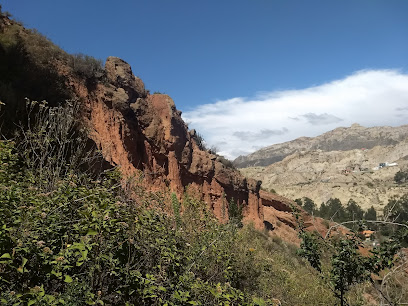
Coca Museum
Uncover the fascinating history of coca in Bolivia at the Coca Museum, a unique cultural gem in La Paz, showcasing its significance in Andean culture.

Valle De Las Animas
Explore Valle De Las Animas: a breathtaking observation deck in La Paz showcasing stunning rock formations and serene valley views.

Culturas y de la Madre Tierra Park
Experience the tranquility and cultural richness of Culturas y de la Madre Tierra Park in La Paz, a perfect escape in the heart of Bolivia.

Mamani Mamani Gallery
Explore vibrant Bolivian art at Mamani Mamani Gallery, a cultural gem in La Paz showcasing indigenous and contemporary masterpieces.

Unmissable attractions to see
Iglesia San Miguel Arcángel
Explore the serene beauty and rich history of Iglesia San Miguel Arcángel, a stunning Catholic church in the heart of La Paz, Bolivia.

Culturas y de la Madre Tierra Park
Discover the natural beauty and cultural richness of Culturas y de la Madre Tierra Park in La Paz, a serene escape in the heart of Bolivia.

Gravity Bolivia
Experience the thrill of mountain biking in the breathtaking landscapes of La Paz with Gravity Bolivia, the ultimate outdoor adventure hub.

Mirador Tupac Katari
Experience the stunning panoramic views of La Paz from Mirador Tupac Katari, a breathtaking observation deck in Bolivia's vibrant capital.

Aruntaya (Laberinto de Gigantes)
Discover the captivating Aruntaya (Laberinto de Gigantes) in La Paz, Bolivia, a natural wonder of towering rock formations and breathtaking landscapes.

Valle de los Gigantes
Explore the breathtaking Valle de los Gigantes, a natural wonder near La Paz, featuring majestic rock formations and serene landscapes.

Kilómetro 0
Discover Kilómetro 0 in La Paz, a vibrant cultural hub and the symbolic starting point for exploring Bolivia's rich heritage.

Chuata la paz bolivia
Uncover the enchanting beauty and rich cultural heritage of Chuata, Bolivia, a hidden gem perfect for nature lovers and adventure seekers.

Cartel La Paz con altura
Discover breathtaking views and vibrant culture at Cartel La Paz con Altura, a must-visit tourist attraction in Bolivia's stunning capital.

Patrimonio Natural Paisajístico Cerro esquina El tío cactus
Explore the stunning biodiversity and breathtaking views at Cerro Esquina El Tío Cactus in La Paz, a must-visit natural attraction for every traveler.
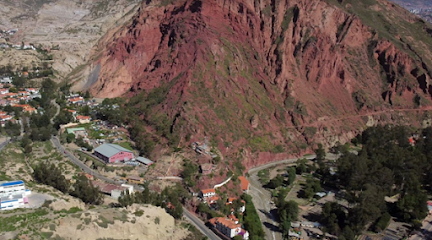
Patrimonio Natural Paisajístico Muela del Diablo y Pachajalla
Explore the stunning landscapes of Muela del Diablo and Pachajalla, a natural wonder in La Paz, Bolivia, perfect for outdoor adventures and breathtaking photography.

Vista desde Pacasa
Discover the stunning panoramic views of La Paz at Vista desde Pacasa, a hidden gem in the heart of Bolivia's breathtaking landscape.

Essential places to dine
Gustu
Discover the essence of Bolivian cuisine at Gustu, where local ingredients meet innovative culinary artistry in La Paz.

El Vagón del Sur
Experience authentic Bolivian cuisine at El Vagón del Sur in La Paz, where every meal tells a story through rich flavors and cultural heritage.

Namas Té
Discover Namas Té: La Paz's beloved vegan restaurant offering delicious plant-based dishes and an exquisite selection of teas in a cozy setting.

Restaurant Vienna
Experience exquisite European cuisine in La Paz at Restaurant Vienna - where every meal is a journey through culinary elegance.

Sabor Cubano
Discover authentic Cuban cuisine at Sabor Cubano in La Paz—a vibrant dining experience filled with rich flavors and warm hospitality.

La Suisse Restaurante
Experience authentic Swiss cuisine with breathtaking views at La Suisse Restaurante in La Paz.

Reineke Fuchs
Experience the authentic flavors of Germany at Reineke Fuchs in La Paz – where tradition meets taste in a cozy setting.

TINTO CARNES & VINOS
Experience top-tier Bolivian steaks and exquisite wines at Tinto Carnes & Vinos in La Paz – where flavor meets elegance.

Ali Pacha
Discover the exquisite flavors of vegetarian cuisine at Ali Pacha, where every dish tells a story of Bolivian heritage and sustainability.

Highlanders Country
Experience vibrant Tex-Mex cuisine at Highlanders Country, where delicious flavors meet warm hospitality in La Paz.

Il Falco
Experience authentic Italian cuisine at Il Falco in La Paz – where every dish tells a story of tradition and flavor.

Ancestral
Discover the essence of Bolivian cuisine at Ancestral - where tradition meets innovation in every dish.

Angelo Colonial
Experience authentic South American cuisine at Angelo Colonial in La Paz – where tradition meets flavor in a cozy setting.

Curry House
Experience authentic Indian flavors at Curry House in La Paz – where every dish tells a story through rich spices and culinary tradition.

Sol y Luna
Experience the vibrant flavors of Bolivia at Sol y Luna, where traditional dishes meet modern culinary creativity in the heart of La Paz.
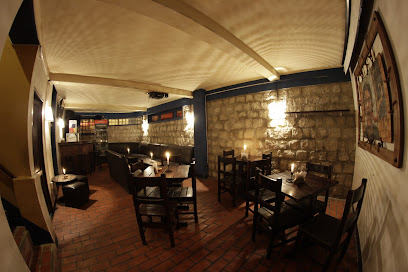
Markets, malls and hidden boutiques
The Witches Market
Experience the vibrant culture of Bolivia at The Witches Market, a unique blend of handicrafts, traditions, and mystical remedies.

Las Torres Mall
Discover a vibrant shopping experience at Las Torres Mall in La Paz, Bolivia, featuring diverse shops, dining, and entertainment options.
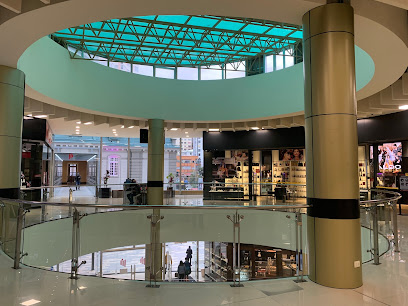
Shopping Norte
Explore Shopping Norte in La Paz, where shopping meets culture, featuring a variety of stores, dining options, and vibrant local events.

Handal Center
Discover the lively Handal Center in La Paz, a shopping haven offering local crafts, dining delights, and a taste of Bolivian culture.

V Centenario
Discover V Centenario in La Paz: Your one-stop shopping destination for Bolivian culture, diverse retail, and delicious cuisine.

La Casona Hotel Boutique
Experience the elegance and comfort of La Casona Hotel Boutique, your perfect retreat in the heart of La Paz, Bolivia.

Plaza Real Shopping Center
Discover shopping, dining, and entertainment at Plaza Real Shopping Center, a vibrant hub in the heart of La Paz, Bolivia.

Mamani Mamani Gallery
Experience the vibrant colors and rich cultural heritage at Mamani Mamani Gallery, a must-visit art destination in La Paz, Bolivia.

Gravity Bolivia
Explore the thrill of adventure with Gravity Bolivia, the premier sport tour agency in La Paz, offering unforgettable mountain biking and paragliding experiences.

Galería Litoral
Experience authentic Bolivian craftsmanship at Galería Litoral, a unique home goods store in the heart of La Paz, inviting tourists to explore local artistry.

Mistura - Manifestación Creativa
Explore Mistura - Manifestación Creativa in La Paz for unique, high-quality Bolivian fashion that blends tradition with modern style.

TheWall Bolivia - Av. 6 de agosto
Discover top-notch camping and rock climbing gear at The Wall Bolivia in La Paz, the ultimate adventure hub for outdoor enthusiasts.

Galería LA PAZ
Experience Bolivia's culture and craftsmanship at Galería LA PAZ, a vibrant shopping mall in La Paz with local and international brands.
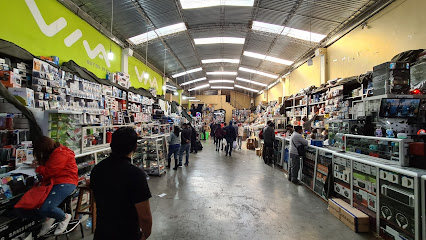
Yume anime store
Discover a treasure trove of anime merchandise and unique gifts at Yume anime store in La Paz, blending pop culture with local charm.

LAM Bolivia
Explore the vibrant world of Bolivian handicrafts at LAM Bolivia, the ultimate destination for unique clothing and authentic souvenirs.

Essential bars & hidden hideouts
Gustu
Discover the heart of Bolivian cuisine at Gustu, where local ingredients and innovative techniques create unforgettable dining experiences.

Pub & Disco Malegria
Discover La Paz's nightlife at Pub & Disco Malegria, where vibrant music meets a lively atmosphere for an unforgettable experience.
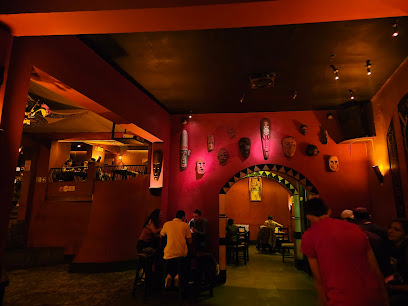
Diesel Nacional
Experience the vibrant nightlife and expertly crafted cocktails at Diesel Nacional, the premier pub in La Paz, Bolivia.

Equinoccio
Experience the vibrant live music atmosphere at Equinoccio, La Paz's premier spot for unforgettable nightlife and local culture.

The English Pub
Experience the warmth of British pub culture in La Paz with delicious grills and a vibrant atmosphere at The English Pub.

Roots
Discover Roots in La Paz - a vibrant bar blending local culture with a lively atmosphere, perfect for unwinding after a day of exploration.

ROCKERS ALIVE MUSIC BAR
Experience the vibrant nightlife of La Paz at Rockers Alive Music Bar, where live music and local culture collide in an unforgettable atmosphere.

CALDERAS SOPOCACHI Cafe Pub-club
Discover the lively atmosphere of CALDERAS SOPOCACHI Cafe Pub-Club in La Paz, where delicious local cuisine meets vibrant nightlife.

The English Lion's Den
Experience the lively atmosphere of The English Lion's Den, a premier sports pub in La Paz, where great food, drinks, and sports come together.

OPEN MIND CLUB
Discover the Inclusive Nightlife at Open Mind Club in La Paz: A Dance Haven for Everyone.

Wave Club
Discover the vibrant nightlife at Wave Club in La Paz, where good music and great company come together for an unforgettable experience.

The Lucky Llama Irish Bar
Experience the essence of Irish culture at The Lucky Llama Irish Bar, where great food, lively atmosphere, and unforgettable memories await in La Paz.

La Costilla de Adan
Experience the vibrant nightlife and culinary delights at La Costilla de Adan, the ultimate bar destination in La Paz.
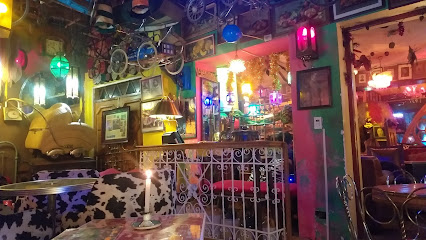
Moe's Bar LPZ
Experience the vibrant nightlife of La Paz at Moe's Bar LPZ, where local flavors and a lively atmosphere come together for an unforgettable evening.

La Luna Pub Music Bar
Immerse yourself in the vibrant culture of La Paz at La Luna Pub Music Bar, where local music and art come alive in a lively atmosphere.

Local Phrases about La Paz Valley
-
- HelloHola
[OH-lah] - GoodbyeAdiós
[ah-DYOHSS] - YesSí
[see] - NoNo
[noh] - Please/You're welcomePor favor
[por fah-BORE] - Thank youGracias
[GRAH-syahss] - Excuse me/SorryDisculpe
[dees-KOOL-peh] - How are you?¿Cómo estás?
[KOH-moh ehs-TAHS] - Fine. And you?Bien. ¿Y tú?
[byen. ee too] - Do you speak English?¿Hablas inglés?
[AH-blahss een-GLEHS] - I don't understandNo entiendo
[noh ehn-TYEN-doh]
- HelloHola
-
- I'd like to see the menu, pleaseQuisiera ver el menú, por favor
[kee-see-EH-rah behr ehl meh-NOO, poor fah-BORE] - I don't eat meatNo como carne
[noh KOH-moh KAR-neh] - Cheers!¡Salud!
[sah-LOOD] - I would like to pay, pleaseQuisiera pagar, por favor
[kee-see-EH-rah pah-GAHR, poor fah-BORE]
- I'd like to see the menu, pleaseQuisiera ver el menú, por favor
-
- Help!¡Ayuda!
[ah-YOO-dah] - Go away!¡Vete!
[VEH-teh] - Call the Police!¡Llama a la Policía!
[YAH-mah ah lah poh-lee-SEE-ah] - Call a doctor!¡Llama a un médico!
[YAH-mah ah oon MEH-dee-koh] - I'm lostEstoy perdido
[ehs-TOY pehr-DEE-doh] - I'm illEstoy enfermo
[ehs-TOY ehn-FEHR-moh]
- Help!¡Ayuda!
-
- I'd like to buy...Quisiera comprar...
[kee-see-EH-rah kohm-PRAR] - I'm just lookingSolo estoy mirando
[SOH-loh ehs-TOY meer-AHN-doh] - How much is it?¿Cuánto cuesta?
[KWAHN-toh KWEHS-tah] - That's too expensiveEsto es muy caro
[EH-stoh ehs moo-EE KAH-roh] - Can you lower the price?¿Puede bajar el precio?
[PWEH-deh BAH-hahr ehl PREE-syoh]
- I'd like to buy...Quisiera comprar...
-
- What time is it?¿Qué hora es?
[keh OR-ah ehs] - It's one o'clockEs la una
[ehs lah OO-nah] - Half past (10)Las diez y media
[lahss dyehss ee MEH-dee-ah] - MorningMañana
[mah-NYAH-nah] - AfternoonTarde
[TAHR-deh] - EveningNoche
[NOH-cheh] - YesterdayAyer
[ah-YEHR] - TodayHoy
[HOY] - TomorrowMañana
[mah-NYAH-nah] - 1Uno
[OO-noh] - 2Dos
[dohss] - 3Tres
[trehss] - 4Cuatro
[KWAH-troh] - 5Cinco
[SEEN-koh] - 6Seis
[sayss] - 7Siete
[SYEH-teh] - 8Ocho
[OH-choh] - 9Nueve
[NWEE-veh] - 10Diez
[DYESS]
- What time is it?¿Qué hora es?
-
- Where's a/the...?¿Dónde está...?
[DOHN-deh ehs-TAH] - What's the address?¿Cuál es la dirección?
[KWAHL ehs lah dee-rehk-SYOHN] - Can you show me (on the map)?¿Puedes mostrarme (en el mapa)?
[PWEH-dehs mohs-TRAHR-meh (ehn ehl MAH-pah)] - When's the next (bus)?¿Cuándo es el próximo (autobús)?
[KWAHN-doh ehs ehl PROH-ksee-moh (ow-toh-BOOS)] - A ticket (to ....)Un boleto (a ....)
[oon boh-LEH-toh (ah)]
- Where's a/the...?¿Dónde está...?
History of La Paz Valley
-
Long before the Spanish conquest, the La Paz Valley was inhabited by indigenous groups, most notably the Tiwanaku civilization. This ancient culture flourished around 600 AD near Lake Titicaca, leaving behind impressive ruins such as the Akapana Pyramid and the Kalasasaya Temple. The Tiwanaku people were skilled in agriculture, architecture, and astronomy, and their influence extended throughout the Andean region.
-
By the 15th century, the Inca Empire had expanded into the La Paz Valley. The Incas integrated the region into their vast network, bringing advanced agricultural techniques and building infrastructure like roads and terraces. They also established administrative centers, enhancing the valley's significance within the empire.
-
In 1548, Spanish conquistadors founded the city of Nuestra Señora de La Paz (Our Lady of Peace) after defeating the indigenous forces. The city quickly became an important colonial settlement due to its strategic location and abundant silver mines in nearby Potosí. The colonial period saw the construction of churches, plazas, and other Spanish-style architecture, which still stands today.
-
La Paz played a crucial role in Bolivia's struggle for independence from Spanish rule. On July 16, 1809, the city witnessed the first major uprising against the Spanish authorities, led by Pedro Domingo Murillo. Although the rebellion was initially suppressed, it sparked a series of events that eventually led to Bolivia's independence in 1825. Murillo is now considered a national hero, and his legacy is commemorated with a statue in the city's central plaza.
-
The Federal War was a significant conflict between liberals and conservatives in Bolivia. The liberals, who were based in La Paz, sought to make the city the capital of Bolivia, challenging the conservative stronghold of Sucre. The war culminated in a liberal victory, and although Sucre remained the constitutional capital, La Paz was designated the seat of government, making it the de facto administrative capital of Bolivia.
-
The Chaco War (1932-1935) between Bolivia and Paraguay had profound effects on La Paz. The war, fought over control of the Gran Chaco region, was one of the bloodiest conflicts in South American history. The loss in the war led to significant political and social changes in Bolivia, including a shift towards more progressive and nationalist policies. La Paz, as the administrative heart of the country, was central to these transformations.
-
The 1952 revolution was a pivotal moment in Bolivian history, leading to sweeping social and economic reforms. It was characterized by a mass uprising led by the Nationalist Revolutionary Movement (MNR). The revolution resulted in the nationalization of mines, agrarian reform, and the expansion of suffrage to all adult citizens. La Paz was at the epicenter of this transformative period, with many of the key events and demonstrations taking place in the city.
-
Today, La Paz is a vibrant metropolis that seamlessly blends its rich historical heritage with modern urban life. The city's unique topography, stretching from the high-altitude plateau down into the valley, creates distinct neighborhoods with varying climates and cultures. The El Alto area, situated on the plateau, has grown rapidly, becoming one of Bolivia's largest and most dynamic cities. La Paz's markets, festivals, and cultural institutions reflect its diverse population and historical depth, making it a fascinating destination for travelers.
La Paz Valley Essentials
-
La Paz Valley is accessible through El Alto International Airport (LPB), located about 14 kilometers from La Paz city center. There are frequent international and domestic flights. From the airport, you can take a taxi or an airport shuttle to reach your destination in the valley. Buses and private transfers are also available for a more economical option.
-
Public transportation in La Paz Valley includes minibuses, buses, and the unique cable car system (Mi Teleférico) which connects various parts of the city and surrounding areas. Taxis are readily available and relatively inexpensive, but make sure to use registered ones. For a more flexible option, consider renting a car, keeping in mind that driving in the city can be challenging due to traffic and narrow streets.
-
The official currency in Bolivia is the Bolivian Boliviano (BOB). Credit cards are widely accepted in major hotels, restaurants, and shops, but it is advisable to carry cash for smaller establishments and markets. ATMs are plentiful in La Paz, but always withdraw from reputable banks to avoid excessive fees.
-
La Paz Valley is generally safe for tourists, but standard precautions should be taken. Avoid wandering alone at night, especially in less crowded areas. Notable areas with higher crime rates include El Alto and certain parts of the city center, where pickpocketing and bag snatching can occur. Always stay vigilant and keep your belongings secure.
-
In case of an emergency, dial 110 for police assistance or 118 for medical emergencies. Major hospitals and clinics in La Paz provide adequate healthcare services. It is highly recommended to have comprehensive travel insurance that covers medical emergencies. Pharmacies are available throughout the city for minor health issues.
-
Fashion: Do dress in layers due to the variable weather. Avoid overly revealing clothing. Religion: Do respect local customs and religious practices, especially in churches and indigenous ceremonies. Public Transport: Do be courteous and offer seats to elders. Don’t eat or drink on public transport. Greetings: Do greet people with a handshake and a friendly 'Buenos días' or 'Buenas tardes.' Eating & Drinking: Do try local dishes like salteñas and anticuchos. Don't refuse food or drink offerings, as it is considered impolite.
-
To experience La Paz Valley like a local, visit the Witches' Market for unique souvenirs and traditional remedies. Engage with locals in the markets and plazas; they are often very friendly and open to sharing their culture. Don't miss riding Mi Teleférico for panoramic views of La Paz and El Alto. For a unique adventure, explore the Valle de la Luna (Valley of the Moon) with its otherworldly rock formations.
Trending Landmarks in La Paz Valley
Nearby Cities to La Paz Valley
-
Things To Do in Copacabana
-
Things To Do in Puno
-
Things To Do in Cochabamba
-
Things To Do in Tacna
-
Things To Do in Arica
-
Things To Do in Arequipa
-
Things To Do in Sucre
-
Things To Do in Potosi
-
Things To Do in Uyuni
-
Things To Do in Iquique
-
Things To Do in Cusco
-
Things To Do in Santa Cruz de la Sierra
-
Things To Do in Machu Picchu
-
Things To Do in Tarija
-
Things To Do in San Pedro de Atacama













